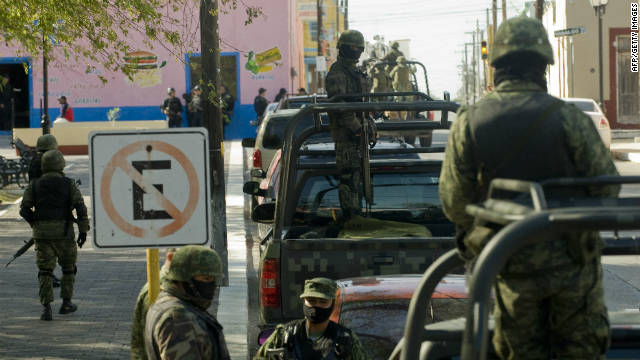Story highlights
- The government released new data Wednesday on drug-violence related deaths
- The new figures cover the first three quarters of 2011
- Since December 2006, more than 47,000 people have been killed by drug violence
Almost 13,000 people were killed in Mexico by suspected drug violence in the first three quarters of 2011, the country's federal attorney general's office said Wednesday.
The figure was the first official tally given by the government for 2011. The exact number -- 12,903 -- corresponds to the deaths reported by state authorities to the federal government that they believe were the result of intercartel rivalry.
The figure covers January to September of last year and is not broken down into categories such as how many victims were civilians, how many were innocent bystanders or how many were the result of shootouts with authorities.
The attorney general's office portrayed the numbers as a sign that the growth rate of the killings that have plagued the country has decreased.
The growth rate of killings between September 2010 to September 2011 was 11%, compared with 70% between 2009 and 2010, the agency said.
The killings were also clearly concentrated in certain parts of the country, the agency said. Some 70% of the killings reported so far for 2011 happened in just eight states, the agency said.
But if the last quarter of 2011 averages the same number of killings as the first three quarters, then Mexico would surpass 17,000 deaths for the year, a new record. The current deadliest year, 2010, recorded 15,273 drug-related killings.
Adding the new statistics, from the beginning of President Felipe Calderon's term in December 2006 to September 2011, at least 47,515 people have been killed in drug-related violence.
In short, the bad news is that the violence continues at a record pace, while the good news is that the rate of growth has fallen, said Eric Olson, senior associate at the Mexico Institute at the Woodrow Wilson International Center for Scholars.
The new figure "means that the conflict is evolving and changing," he said.
But, he cautioned, "You can't draw too many conclusions from one number. One needs a deeper look."
The statistics are broken down by state and municipality, which helps shed some light on the problem areas in Mexico.
Through September 2011, Ciudad Juarez was the city that registered the most killings, with 1,206. Another hot spot was the resort town of Acapulco, with 795 killings.
Major cities Monterrey and Durango saw high levels of violence, with 399 and 390 killings, respectively.
Small towns were not immune to the violence, though.
The small northern Mexican town of San Fernando, where in 2010 officials found the bodies of 72 slain migrants, registered 292 killings through September, 2011.
Calderon has steadfastly maintained that the offensive against the cartels is being won by the government, though it didn't give much commentary with the new death toll.
The upside of the figures -- decreased violence in some areas and a slower rate of the increase in the killings -- alone are not enough to say the strategy is working or not, Olson said.
Other factors, such as the demand for illegal drugs in Mexico and the United States and changes in the balance of power among the cartels, make a difference, he said.
"There is no abatement in violence despite Calderon's claims that he is winning the war," said Bruce Bagley, a professor at the University of Miami and an expert on drug trafficking.
Beyond the numbers, Mexican authorities have succeeding in driving back the cartels and creating fragmentation among them, Bagley said.
Another sign that the offensive is hurting the cartels is that there is a clear move by the groups to seek new safe havens, he said.
More and more, the groups are extending their presence into Central America.




